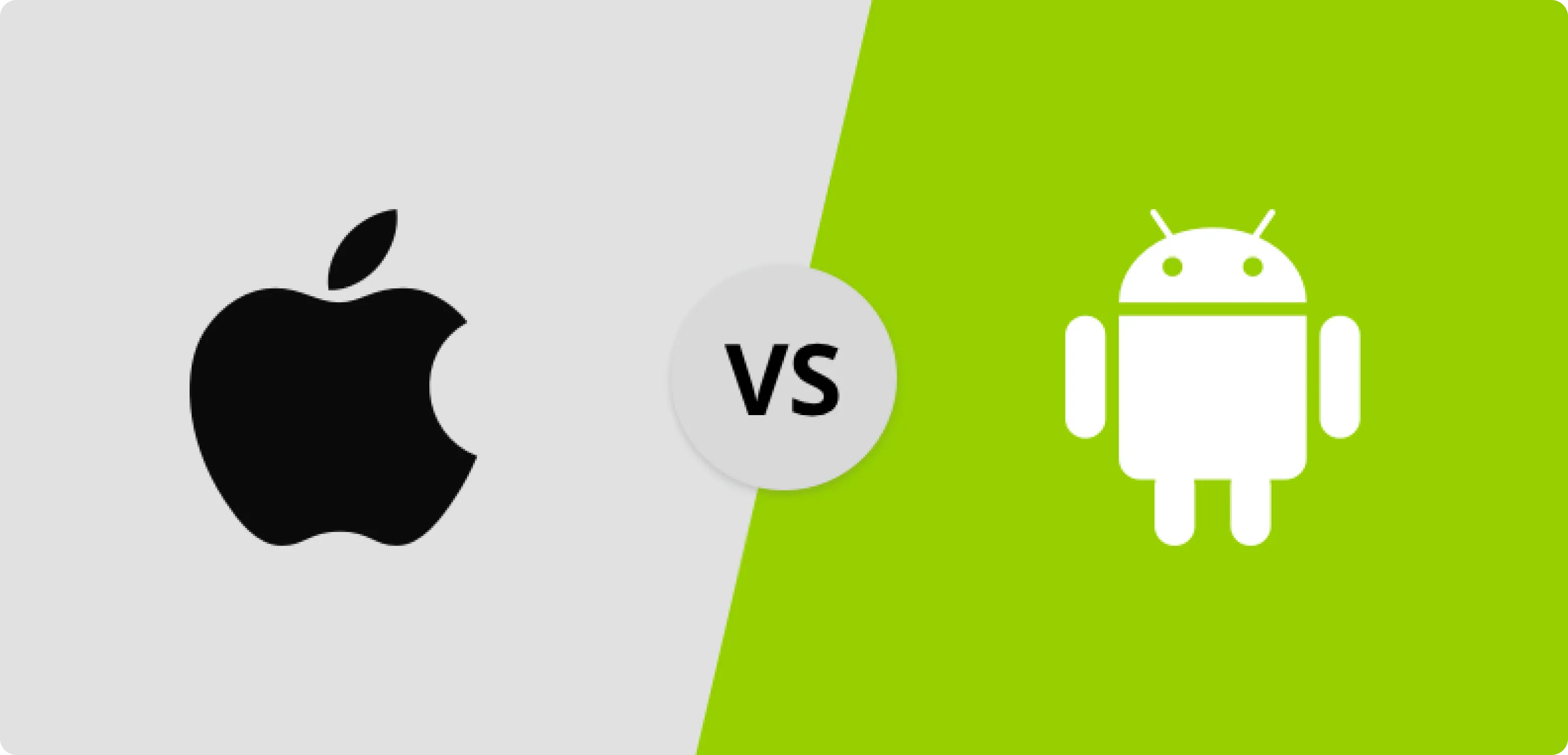Android Vs Apple – The Difference in User Behaviour
Android and Apple are two of the most popular mobile operating
systems in the world. Both have unique features, and as a result,
they attract different types of users. These differences can impact
how developers create and market
mobile apps
for these platforms.
Apple users tend to be more affluent and educated than Android
users. As a result, Apple users are more likely to spend money on
apps and in-app purchases. This means that
app developers
may have a greater opportunity to generate revenue on the Apple
platform.
Android users are more likely to download and use free apps, while
Apple users are more likely to pay for premium apps. Android users
are also more likely to customize their devices with third-party
apps and widgets, while Apple users tend to use the default apps
that come with their devices.
User Interface (UI) Design
Apple has a more consistent and standardized UI across its devices,
which can make it easier for developers to create a consistent user
experience. In contrast, Android has a more flexible UI, which
allows developers to create more custom and unique designs. This
means that developers may need to spend more time optimizing their
UI for Android, to ensure that it is consistent across different
devices and screen sizes.
Developing apps for Android can be more challenging due to the sheer
number of devices running the operating system. There are hundreds
of different devices running Android, each with different screen
sizes, resolutions, and hardware configurations. In contrast, Apple
has a smaller range of devices, making it easier for developers to
optimize their apps for the platform.
Android uses Java and Kotlin as its primary programming languages,
while Apple uses Swift and Objective-C. This means that developers
may need to have different skill sets and knowledge to develop apps
for the two platforms.
Both Android and Apple have integrated development environments
(IDEs) for app development. Android uses Android Studio, while Apple
uses XCode. These IDEs have different features and tools that can
impact the development process.
Apple has a more rigorous app approval process than Android. This
means that developers may need to spend more time and resources
getting their app approved for the Apple App Store. On the other
hand, the Google Play Store has a more lenient approval process,
which can make it easier for developers to get their
mobile apps
published.
App Store Optimization (ASO)
ASO is the way of optimising
mobile apps
to rank higher in app store and play store search results. The ASO
strategies for Android and Apple can differ due to the differences
in user behaviour. For example, on Apple, developers may want to
focus on getting more app reviews and ratings, as this can impact
app visibility in search results. On Android, developers may want to
focus on optimizing their app for a wider range of devices and
screen sizes.
Testing and debugging apps can be different on Android and Apple.
Android has a larger number of devices to test for, which can make
the testing process more complex. Apple, on the other hand, has a
more closed ecosystem, which can make it easier to test and debug
apps.
One of the biggest challenges in Android
App Development
is device fragmentation. Developers have to optimize their apps for
a wide range of devices with different hardware specifications and
software versions. This can result in compatibility issues and can
make it more difficult to create a consistent user experience across
different devices.
Apple users are more likely to pay for apps and in-app purchases,
while Android users tend to download free apps. This means that
developers may need to consider different revenue models for the two
platforms. For example, developers may want to charge for their apps
on Apple, while offering free apps with ads or in-app purchases on
Android.
Apple users tend to spend more money on apps and in-app purchases,
but Android has a larger market share globally. This means that
developers need to consider the best monetization strategy for their
target audience. For example, if a developer wants to target a
global audience, they may want to focus on ad-based monetization as
opposed to in-app purchases or subscriptions.
Android
app development
can be more expensive than iOS app development due to the need to
optimize apps for a wider range of devices. Developers may need to
test their apps on multiple devices, which can increase development
costs. In contrast, Apple
app development
can be more cost-effective due to the standardized UI and smaller
range of devices. Another way of minimizing mobile app development
costs is to opt for cross-platform app development where an app
developer just needs to maintain a single code base for iOS and
Android apps. React Native and Futter are the most widely used
technologies for cross-platform app development.
Conclusion
The differences in user behaviour between Android and iOS apps can
have a significant impact on mobile
app development. Developers need to consider these differences when creating and
marketing their apps for these platforms, to ensure that they can
reach and engage their target audience effectively.

 Custom Software Development
Custom Software Development Software Testing Services
Software Testing Services Mobile Application Development Services
Mobile Application Development Services Web Application Development Services
Web Application Development Services Software Product Development Services
Software Product Development Services Ecommerce Development Services
Ecommerce Development Services AI/ML Development Services
AI/ML Development Services Vulnerability Assessment and Penetration Testing
Vulnerability Assessment and Penetration Testing AR/VR Developement Services
AR/VR Developement Services Web3 Development
Web3 Development








